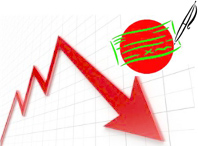Discover how cutting-edge inventory solutions are transforming restaurant operations, reducing waste, and boosting profitability in 2025.
The Evolution of Restaurant Inventory Management
Restaurant inventory management has come a long way from the days of manual stocktaking and paper logs. In the past, operators relied heavily on spreadsheets, handwritten notes, and time-consuming routines to keep track of perishables and supplies. Errors, over-ordering, and waste were common, impacting both costs and customer satisfaction.
Fast forward to 2025, and the landscape looks remarkably different. With the advent of digital tools and cloud-based systems, restaurant owners now have real-time visibility into their inventory. These advancements have led to more informed purchasing decisions, accurate forecasting, and streamlined operations that are essential in today’s competitive market.
Harnessing Technology: Automation and AI in 2025
The integration of automation and artificial intelligence (AI) is revolutionizing restaurant inventory management in 2025. Smart sensors, IoT-enabled shelves, and automated reordering systems now monitor stock levels down to individual ingredients, triggering restocks only when needed. This minimizes overstocking, prevents spoilage, and ensures menu items are always available.
AI-driven analytics further enhance decision-making by predicting trends, seasonality, and even supplier performance. Restaurants can now anticipate demand spikes, optimize their storage space, and negotiate better deals with suppliers, resulting in increased profitability and reduced operational headaches.
Best Practices for Reducing Food Waste and Shrinkage
Reducing food waste and shrinkage remains a top priority for forward-thinking restaurants. In 2025, best practices include implementing precise portion controls, leveraging expiration tracking, and conducting regular inventory audits—all aided by digital tools. Automated alerts prompt staff to use soon-to-expire products first, while recipe management software ensures consistent ingredient usage.
Additionally, fostering a culture of sustainability and accountability among staff contributes to waste reduction efforts. Many restaurants now partner with local charities to donate surplus food, further minimizing waste and enhancing community relations.
Integrating Inventory with Supply Chain and POS Systems
Seamless integration between inventory management, supply chain platforms, and point-of-sale (POS) systems is a game-changer in 2025. Real-time data flows across these systems allow restaurants to instantly adjust orders based on sales trends, inventory levels, and supplier availability.
This integration not only improves accuracy but also enhances agility, enabling quick responses to disruptions or changing customer preferences. As a result, restaurants can maintain optimal stock levels, reduce lead times, and offer a consistently high level of service to their guests.
Future Trends Shaping Restaurant Inventory Solutions
Looking ahead, several emerging trends are set to further transform restaurant inventory management. Blockchain technology promises enhanced transparency and traceability throughout the supply chain, while sustainability metrics are increasingly embedded into inventory platforms to support eco-friendly initiatives.
Augmented reality (AR) and voice-activated assistants are also making inroads, simplifying inventory checks and staff training. As these innovations continue to evolve, restaurants embracing the latest inventory solutions will remain agile, sustainable, and profitable in the ever-changing foodservice landscape.



 Do bartenders steal? I've worked with some outstanding bartenders over the years, men and women who are honest, hard-working, team/family-oriented and loyal. I'd like to think all bartenders are like that, but according to some, I'm misguided.
Do bartenders steal? I've worked with some outstanding bartenders over the years, men and women who are honest, hard-working, team/family-oriented and loyal. I'd like to think all bartenders are like that, but according to some, I'm misguided.
 A typical beverage operation generates a constant stream of data and information, endless columns of figures and daily records. But you'd be surprised how few managers actually do anything with these figures, let alone fully grasp their implications. So how can you tell if you're operating profitably? The answer is you can't, unless, of course, you get to grips with some basic mathematics. For a start, you'll need to know how to perform a few simple calculations, such as working out an item's cost percentage. You don't need to be a mathematician to figure the following straightforward formulas:
A typical beverage operation generates a constant stream of data and information, endless columns of figures and daily records. But you'd be surprised how few managers actually do anything with these figures, let alone fully grasp their implications. So how can you tell if you're operating profitably? The answer is you can't, unless, of course, you get to grips with some basic mathematics. For a start, you'll need to know how to perform a few simple calculations, such as working out an item's cost percentage. You don't need to be a mathematician to figure the following straightforward formulas:
 Why do they do it? Your bar is a good place to work; you're a decent boss - you pay above-average wages - why does your staff feel the need to break the law? Put simply, human nature is to take something for nothing when the chance arises. An informed bar manager is in a far better position to fight losses from theft.
Why do they do it? Your bar is a good place to work; you're a decent boss - you pay above-average wages - why does your staff feel the need to break the law? Put simply, human nature is to take something for nothing when the chance arises. An informed bar manager is in a far better position to fight losses from theft. The purchasing department is the linchpin when it comes to reducing costs. It is much easier to control costs in this area than anywhere else in the operation. The bottom line is that astute buying techniques offer the best opportunity for a business to increase its overall profits.
The purchasing department is the linchpin when it comes to reducing costs. It is much easier to control costs in this area than anywhere else in the operation. The bottom line is that astute buying techniques offer the best opportunity for a business to increase its overall profits.
